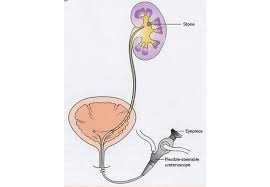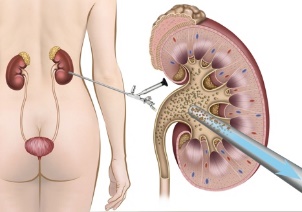
10-20% of the general population is found to have kidney stones at least once in their lifetime.
How do you know if you have kidney stones?You will usually be unaware until the kidney stones detach themselves from your kidney walls and start moving into your ureters, bladder, and urethra as you pee.
Kidney stones variate in shapes and sizes. They can be smooth, jagged, or sharp and can be anywhere from 2mm in diameter to the size of a golf ball! The record for the largest kidney stone to date is the size of a 17cm coconut.
Generally, they can either be asymptomatic or symptomatic. If asymptomatic, you might only be aware of their presence after an MRI or CT Scan targeting your kidneys.
If symptomatic, the symptoms could be:
Your ureters have a relatively narrow diameter of 2-3mm and a long passageway of approximately 10-12 inches.
When these kidney stones force themselves down your ureters, they cause friction and could tear and rip your ureters. You may feel pressure that ranges from a mild and dull pain as you pee or tremendous pain if your kidney stones are above 5mm in diameter and have a jagged or sharp surface area as they squeeze themselves down your ureter – rubbing against your ureteric plexus (the nerves in your ureter).
Kidney stone patients have described the pain as excruciating! So, the earlier you treat the kidney stones before they grow larger, the less pain and damage they could cause to your kidneys and urinary system.
How do you get rid of kidney stones?Depending on the size and hardness of your kidney stones as well as your body type, your urologist might suggest non-surgical or minimally invasive surgical procedures to help remove your kidney stones.
Generally, the idea is to identify the stone and break it into smaller particles or dust. This can be achieved through these procedures:
There are 3 main treatments urologists may use to treat your kidney stones: ESWL, Ureteroscopy and PCNL.
| Kidney Stone Treatments | Extracorporeal Shockwave Lithotripsy (ESWL) | Retrograde Intrarenal Surgery (RIRS) | Percutaneous Nephrolithotomy (PCNL) |
|---|---|---|---|
| Duration of the procedure | Outpatient (1 day) | Inpatient (2-3 days) | Inpatient (4-5 days) |
| Days needed to return to normal activities | Usually 2 days | Usually 1 week | Usually 1-2 weeks |
| Procedure |
|
|
|
| Pictorial Procedure |  |  |  |
| Benefits/ Success Rate |
|
|
|
| Side Effects/ Discomfort/ Risks/ Complications |
|
|
|
If left untreated, kidney stones might dislodge to your ureters and cause blockage, which may then lead to increased pressure in your kidneys, causing more damage to them.
How do you prevent yourself from getting kidney stones?Kidney stones or nephrolithiasis are small hard mineral deposits formed in the kidneys through a process called crystallization.
There are more than 3000 different compounds in the urine – mainly made up of salt and minerals. 80% of these crystals or kidney stones are made up of calcium and oxalates. The rest are either made up of calcium, uric acid and phosphates, or caused by bacterial infections, genetic disorders or some medications.
The best prevention is WATER. You need to pee at least 2.5L of urine per day to prevent the stone from forming again and help flush out your system properly. If you work in a place where you sweat a lot, then you need to drink even more water to achieve the urine output of 2.5L per day. If not, most of the fluid that you drink will pass out through sweat instead of urine. Other suggestions are to reduce the dietary consumption of purine (alcoholic beverages, anchovies, mussels, bacon, and more) or oxalate (beans, berries, chocolates, coffee, and more) as they facilitate the formation of stones.
This article was contributed by Dr Toh Charng Chee, Consultant Urologist at Pantai Hospital Ampang. To know more about where and when to see Dr Toh Charng Chee at his clinic, click here.

